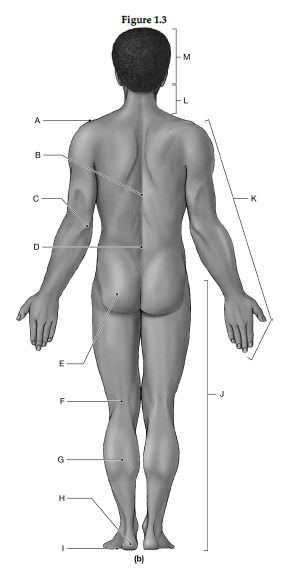Diploë is spongy bone found in ________ bones.
A) short
B) flat
C) pneumatized
D) sesamoid
E) irregular
Ans: B) flat
You might also like to view...
On axial CT images, which muscle of the neck is seen most posteriorly?
A. Sternocleidomastoid B. Erector spinae C. Posterior scalene D. Longus capitis/longus colli
Using the figure below, identify the labeled part.

1) Label A: ______________________________
2) Label B: ______________________________
3) Label C: ______________________________
4) Label D: ______________________________
5) Label E: ______________________________
6) Label F: ______________________________
7) Label G: ______________________________
8) Label H: ______________________________
9) Label I: ______________________________
10) Label J: ______________________________
11) Label K: ______________________________
12) Label L: ______________________________
13) Label M: ______________________________
Describe why table salt is a compound
A) Table salt is a compound because it is made up of more than one element in different proportions. B) Table salt is a compound because it is made up of only one element with different isotopes. C) Table salt is a compound because it is made up of only one element bound with more than one type of chemical bond. D) Table salt is a compound because it is made up of more than one isotope in different proportions. E) Table salt is a compound because it is made up of more than one element in a fixed proportion.
Which chemical class of hormone is more likely to need a binding protein for transport in the blood?
A. water-soluble B. amino acid derivative C. protein D. lipid-soluble